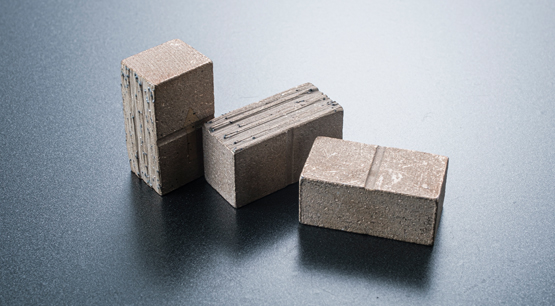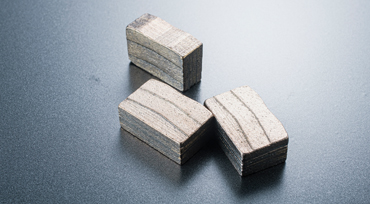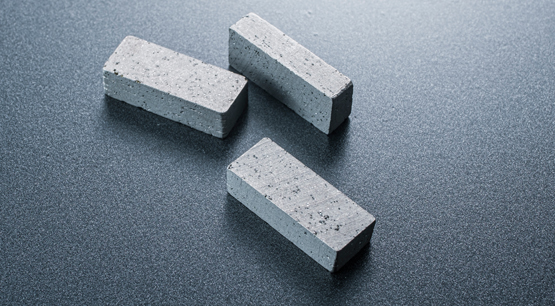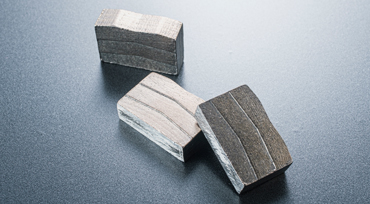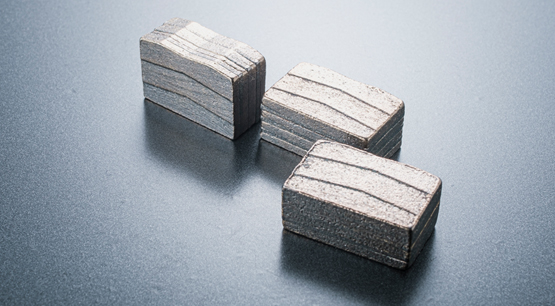The diamond wire saw is composed of three parts: steel cable, protruding beads, and connecting material. If the protruding beads are not sharp enough, during the cutting process, the grinding force of the beads is not enough, causing the beads to get stuck in the middle of the stone. We often say that the rope is clamped . In this case, find a way to increase the cutting seam and pull the jammed beads out of the seam. There is no other way. If you encounter a large surface of the stone, if the stone cannot be pushed, it will cause a serious situation that you need to re-cut a new surface, so the rope jam is a very serious problem in the wire saw cutting problem. The second is the broken rope. There are many reasons for the broken rope. For example, in the wire saw mining process, the beads start to move, and then the beads do not participate in the cutting, but they continue to polish the surrounding rubber and steel wire ropes, and eventually cause the broken rope, or may be a bead was stuck . but it was still forced to do the construction, which eventually caused the rope saw to break the rope, and the beads were directly stuck in the stone cracks, causing serious consequences.
The above has introduced two situations that often occur in diamond wire saws, rope clamping and rope breaking. So what are the situations that will occur in these two situations? How to avoid these two problems when using a wire saw?
Analysis and solution of rope clamping
1: Rope clamping caused by unqualified diamond wire saw: The main cutting part of the diamond wire saw is the diamond and powder sintered section layer on the bead, also called the wire saw working layer, which is made of diamond and metal powder through high temperature sintering. Therefore, the situation that the wire saw does not move needs to be analyzed from the working layer directly involved:
1)When the diamond quality is poor, the diamond is divided into grades. A good grade diamond has higher grinding performance. If you choose a poor diamond, the grinding ability is weak. During the cutting process, the diamond involved in the cutting cannot be very high. If the cutting work is done well, the wire saw will not.
2) When the carcass material is too hard, the carcass is used to fix the diamond. When the hardness of these metal carcasses is high, when cutting softer materials, the hard carcass is not easy to consume, and the diamond is not easy to be exposed, so the carcass It does not have the cutting performance itself, so the cutting does not move.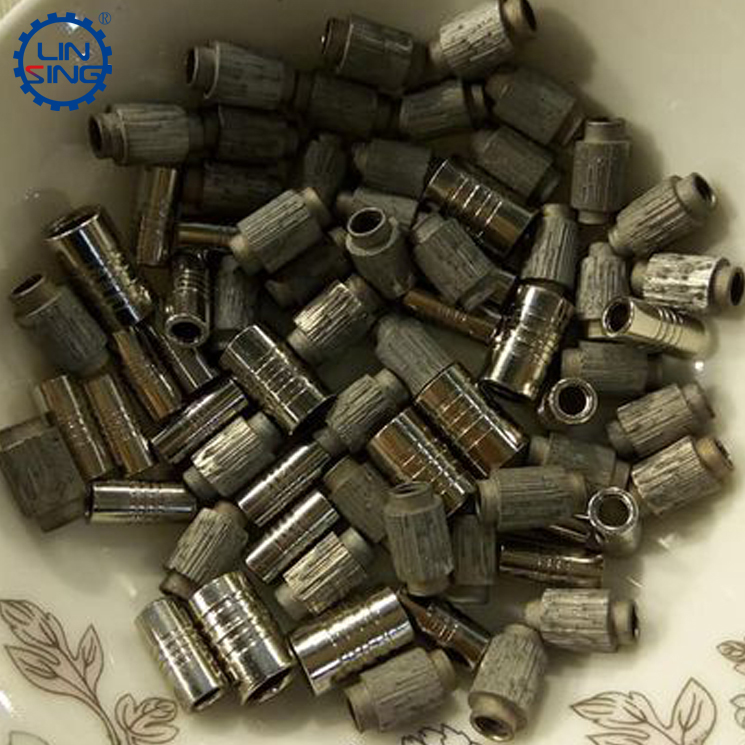
In the above two cases, the improvement method is roughly the same. The low-grade diamond is changed to the high-grade, and the hardness of the metal matrix bond material with excessively high wear resistance needs to be adjusted appropriately.
2: In addition to the problem of beading, too fast feed speed is also one of the reasons for rope clamping. If the feed speed is too fast, when the wire saw cuts the hard structured material, the cutting force will be reduced, but the constant pressure will eventually cause the beads to get stuck in the hard cut part that is not cut. If you encounter this problem, appropriately reducing the feed speed to make the wire saw cutting more stable and smoother can perfectly solve this problem.
3: Insufficient motor power of the wire saw can also lead to rope clamping. Generally speaking, the material cut by the wire saw, the size of the cutting surface, and the position of the wire saw will affect the cutting of the wire saw, such as the cutting object The hardness is large, the cutting surface is larger, the wire saw machine is placed in a remote location, and the number of guide wheels makes the wire saw machine need more pulling force during the allowable process. When the low-power machine cannot meet the line required for normal cutting. At the time of speed or feed speed, it is inevitable that the rope will be clamped. The solution is also very simple, it can be solved by choosing a wire saw machine of suitable power.
4: The amount of cooling water is insufficient. In the cutting process of the wire saw, insufficient cooling water will cause stone dust and stone chips to accumulate in the cutting gap and hinder secondary cutting. Insufficient cooling water will cause the temperature of the beaded part to rise sharply during the cutting process. The diamond starts to be carbonized at 900 degrees Celsius. Once carbonization occurs, the diamond no longer has the cutting ability. Such a wire saw continues to cut, and the rope clamping is only time. problem. The solution is also very simple: give the wire saw sufficient cooling water to make the wire saw cut more smoothly.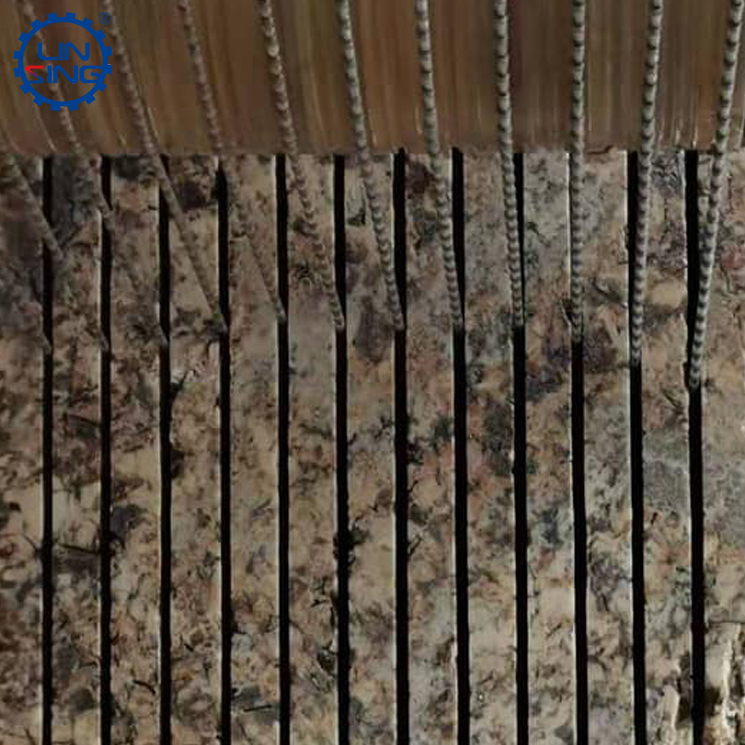
There are also many situations for broken ropes, and we will introduce them one by one below:
1: The curvature is too high to cause the rope to break: The diamond wire saw must not be bent excessively. The wire saw in the bending is very prone to break the rope. This situation is mainly caused by the wire saw cutting process, and the small surface of last 20-30 centimetre are very harmful to the wire saw. The solution is to replace the old wire saw or discarded wire saw for cutting when cutting to the end, so that the new rope can be used to the maximum and the wire saw can maintain the best operating condition.
2: Too strong pulling force causes the rope to break, and it can also be considered that the feed speed is too high to cause the rope to break: in the wire sawing process, the greater the feeding speed, the higher the wire speed of the wire saw, and the wire saw will run backwards. The faster the speed, the greater the tensile force that the wire saw will suffer. Long-term high-speed operation will reduce the tensile strength and anti-aging performance of the wire saw, and the excessive fatigue of the wire rope will naturally cause the wire rope to break directly. rope. In this case, the strength of the wire rope must be adjusted, and the feed speed and the pulling force of the wire saw must be appropriately reduced.
3: The problem of connecting parts. In the wire saw production process, the glue injection process is particularly important. The quality of the glue and the glue injection process need to be carefully completed in accordance with the process. If there is a problem with the connecting material, the glue will soon crack , And separated from the beads, causing the beads to move, and eventually lead to broken rope. The solution is to replace the new supplier, because the glue injection process and the quality of the glue can not be improved in a short time, establish and choose Linxing diamond wire saw, adopt the domestic first-class glue injection production line and Italy anti-cracking and tensile technology, and let the rubber More elasticity and wear resistance, greatly increasing the service life of the wire saw.
4: The biggest rope breaking problem is still the handling of the joint part. How to connect the joint and what kind of connecting material is used is very important. It is not important to carefully complete the wire saw butt and choose a better quality wire saw connection buckle. , Can greatly reduce the risk of rope breaking, and reduce the safety risk of rope breaking.
5: The hard sharp corners are not processed. Use a wire saw to cut any hard materials. Make sure that the surface of the cut surface is flat and there are no protruding sharp corners, especially the near point of the wire saw cutting process. It does not cut it, but due to the continuous rotation of the wire saw, if there are hard sharp corners, each bead will undergo a collision. Over time, the beads of the wire saw will become loose, and the beads will move and eventually be ground. The wire rope is broken and the rope is broken. In this case, we must pay attention to the solution. Before quarrying stone or cutting reinforced concrete, we must deal with the raised part of the cutting edge of the cutting object, especially metal or hard rock debris (such as the outer part of the marble vein).

How to avoid the rope breaking with the diamond wire saw
Publish date:2022-07-12 15:44:13 Article From:Linsing Diamond Tools Clicks:



